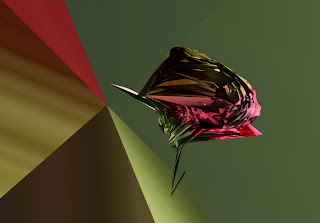I have been thinking about taking slices from different angles. It occurred to me that my model consists of three or four main forms, which together compose the flower. The angles in which they direct themselves are erratic, so it seems logical to separate my model into these smaller chunks and then render their sections.
By exporting sections covering the most surface area possible at a time, I can translate my flower into two dimensions with a lot less hassle and far fewer pieces to cut out. It is rather difficult to articulate in words this concept, so above is a screenshot of my progress. A slice has been applied to remove the top half of the flower, revealing its core which has been divided into sections for exporting as Ilustrator files.















































